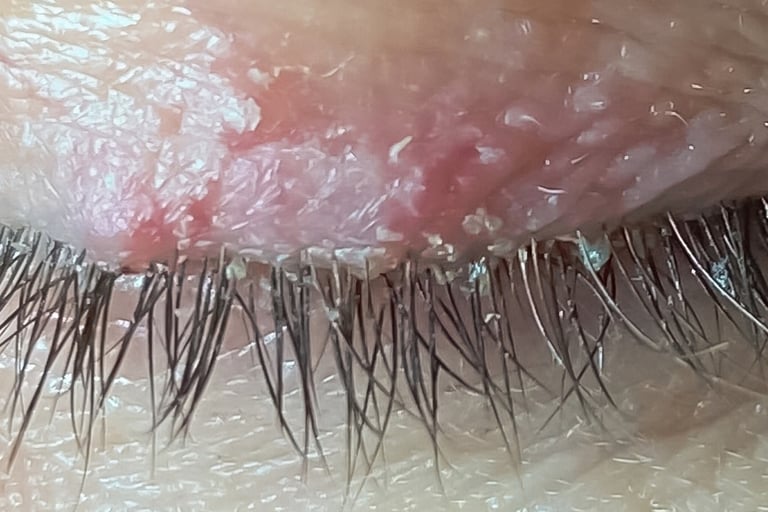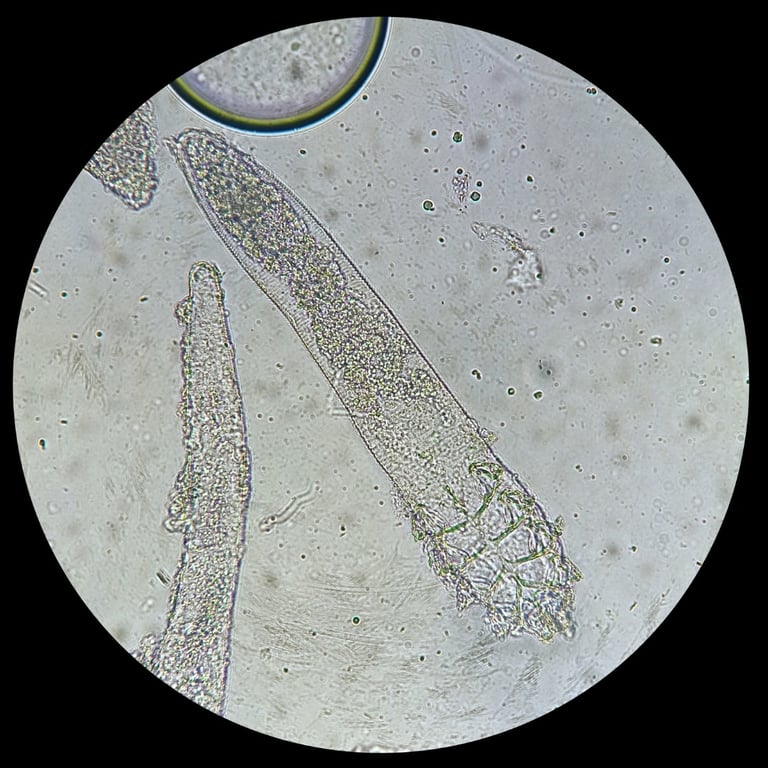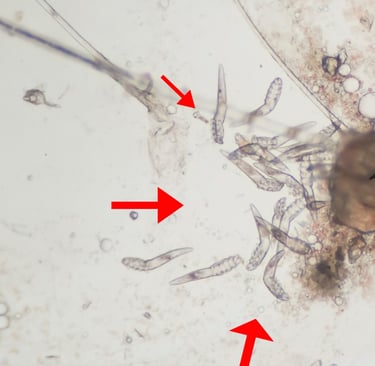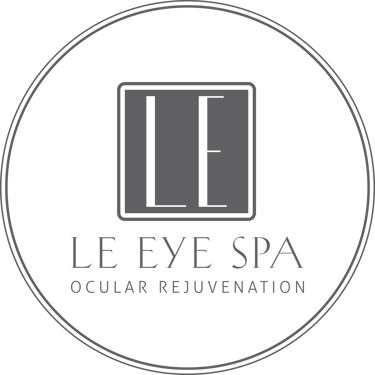Common Eye Creeper: Demodex Mites
Unlocking the Mystery of Demodex Mites: Symptoms, Risks, and Effective Treatments Discover how Demodex mites, natural residents of our skin, can become troublesome when they overpopulate, leading to eye irritation, redness, and bacterial infections. Stay informed to keep your eyes healthy and comfortable
9/3/20243 min read


Understanding Demodex Mites and Their Impact on Eye Health
What Are Demodex Mites?
Demodex mites are microscopic 8 legged, worm-like parasites that naturally reside on human skin, including the delicate area around the eyes. The two primary species affecting humans are Demodex folliculorum and Demodex brevis. These mites typically live in hair follicles and sebaceous glands, where they feed on dead skin cells and oils. However, when their numbers increase significantly, they can cause a range of problems.
Symptoms of Demodex Overpopulation
An overgrowth of Demodex mites can lead to a variety of uncomfortable symptoms:
Lid Itchiness: Persistent itching around the eyelids.
Eye Redness: Inflammation and redness along the eyelid margins.
Dry Eye: A feeling of dryness or grit in the eyes.
Meibomian Gland Dysfunction: Blockage or dysfunction of the oil-secreting glands in the eyelids.
Eye Irritation: General discomfort and irritation.
Stinging: A burning or stinging sensation in the eyes.
Additionally, Demodex mites carry bacteria, which increases the bacterial load on the eyelids and raises the risk of bacterial infections. Demodex are known to burrow deep into the lash follicles and lay their eggs within these follicles. Their life cycle typically spans about three weeks, which means that an unchecked population can quickly exacerbate symptoms.
Impact on Contact Lens Users
For contact lens wearers, Demodex blepharitis can lead to significant discomfort and intolerance to lens use. The irritation and inflammation caused by these mites can make wearing contact lenses increasingly challenging and uncomfortable.
Treatment Options
Managing Demodex overpopulation involves a combination of home hygiene, prescription medications, and professional treatments:
Home Hygiene: Regular cleaning of the eyelashes and eyelid area with a doctor-approved tea tree oil-based cleanser can help manage Demodex mites. Tea tree oil has natural properties that repel mites and can alleviate symptoms.
Prescription Medication: Your eye care professional may prescribe topical treatments to target the mites and reduce inflammation.
In-Office Treatments: Professional procedures such as microblepharoexfoliation and intense pulsed light (IPL) therapy can provide significant relief. Microblepharoexfoliation offers a thorough cleaning of the eyelid margins, removing debris, excess oil, and mites. IPL therapy helps by targeting inflammation and reducing the mite population.
The Risks of Ignoring Demodex Overpopulation
If left untreated, Demodex overpopulation can lead to serious complications:
Atrophy or Death of Meibomian Glands: Persistent inflammation can cause permanent damage to these essential oil-secreting glands.
Loss of Eyelashes: Continuous irritation may result in the loss of eyelashes.
Irregularity of Eyelid Margin: Chronic issues can alter the structure and appearance of the eyelid.
Chronic Disease: Ongoing discomfort and potential progression to more severe ocular conditions.
Increased Bacterial Load: An overgrowth of Demodex mites can raise the bacterial load on the eyelids, increasing the risk of bacterial infections.
How Common Is Demodex Blepharitis?
Demodex blepharitis is relatively common, especially among older adults and those with certain underlying health conditions such as acne, and rosace. It is also much more common in those with poor facial hygiene. Although many people have Demodex mites without experiencing symptoms, an overgrowth can lead to noticeable discomfort and eye problems.
Conclusion
Demodex mites are a natural part of our skin’s ecosystem, but their overgrowth can result in significant eye health issues, including bacterial infections and contact lens intolerance. Effective management involves regular eyelid hygiene, professional treatments like microblepharoexfoliation and IPL, and, if necessary, prescription medications. If you suspect you have Demodex-related problems, consult with an eye care professional to develop an appropriate treatment plan and ensure optimal eye health. health.


With the naked eye, Demodex blepharitis appears as thickened, crust-like collars at the base of the eyelash




Eight-legged parasite, Demodex, shown in high magnification
Follow us
Subscribe to our newsletter
Hours
Appointment Only | Monday - Friday
Contact
9260 West Sunset Rd Ste 209, Las Vegas, NV 89148
Text or call: (702) 518-2711* | Fax: 888-830-5518
Email: info@leeyespa.com
*For fastest response times, please text or email


